Dealing with clogged drains is a common plumbing issue that can disrupt your daily routine and cause inconvenience. Whether it's a slow-draining sink or a backed-up shower, understanding the common causes of clogged drains can help you prevent future blockages.
Let's explore ten common causes of clogged drains and provide practical tips to help you maintain clear and efficient plumbing in your home.
- Hair: Hair is one of the primary culprits behind clogged bathroom drains. Over time, hair strands can accumulate in the drainpipe, combining with soap residue and other debris to form stubborn clogs. Use a drain strainer or stopper to catch hair and regularly clean it to prevent it from going down the drain.
- Food Waste: In the kitchen, food particles, grease, and cooking oils can easily find their way into the drain. Avoid disposing of large food scraps down the sink and use a sink strainer to catch smaller particles. Scrape dishes and pans into the trash before washing them to minimize food waste entering the drain.
- Soap Scum and Residue: Soap scum can accumulate in bathroom drains, especially in combination with hair and mineral deposits. Regularly clean your drain to remove soap residue and consider using liquid soaps instead of bar soaps, which can be more prone to leaving residue.
- Tree Roots: In outdoor drains and sewer lines, tree roots can infiltrate and cause blockages. The roots are attracted to the moisture and nutrients present in the pipes. To prevent this, plant trees away from drainage lines and have regular inspections to identify potential root intrusion.
- Mineral Buildup: Hard water contains minerals like calcium and magnesium that can accumulate and form deposits in pipes over time. These mineral deposits can restrict water flow and lead to clogs. Consider installing a water softener system to reduce mineral buildup and periodically clean your drains to remove any existing deposits.
- Foreign Objects: Accidentally dropping small objects, such as jewelry, toys, or cotton swabs, down the drain can cause blockages. Be cautious when using sinks and toilets, and ensure that only appropriate items are disposed of or flushed.
- Fat, Oil, and Grease (FOG): Pouring fat, oil, and grease down the drain is a common mistake that can lead to clogs. When FOG cools, it solidifies and adheres to the pipe walls, reducing water flow. Instead, collect and dispose of FOG in a sealed container or wipe greasy pans with a paper towel before washing them.
- Flushing Non-Flushable Items: Flushing non-flushable items, such as baby wipes, sanitary products, or paper towels, can cause significant blockages in toilets and sewer lines. Only flush toilet paper and waste, and dispose of other items properly in the trash.
- Insufficient Ventilation: Drainage systems rely on proper ventilation to maintain optimal water flow. Insufficient venting can create air pressure imbalances, resulting in slow drains and gurgling sounds. Ensure that your plumbing system has adequate ventilation to prevent clogs.
- Aging Pipes: Over time, old pipes can corrode, collapse, or develop cracks, leading to reduced water flow and potential clogs. If you have an older home, consider having your plumbing system inspected regularly to identify and replace aging pipes before they cause major issues.
By understanding the common causes of clogged drains and taking preventive measures, you can maintain efficient plumbing in your home and avoid the inconvenience of blockages. Remember to use drain strainers, dispose of waste properly, and be mindful of what goes down the drain.
If you find yourself with a clogged drain or just want routine drain cleaning maintenance, contact Dyess Air & Plumbing today!

